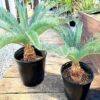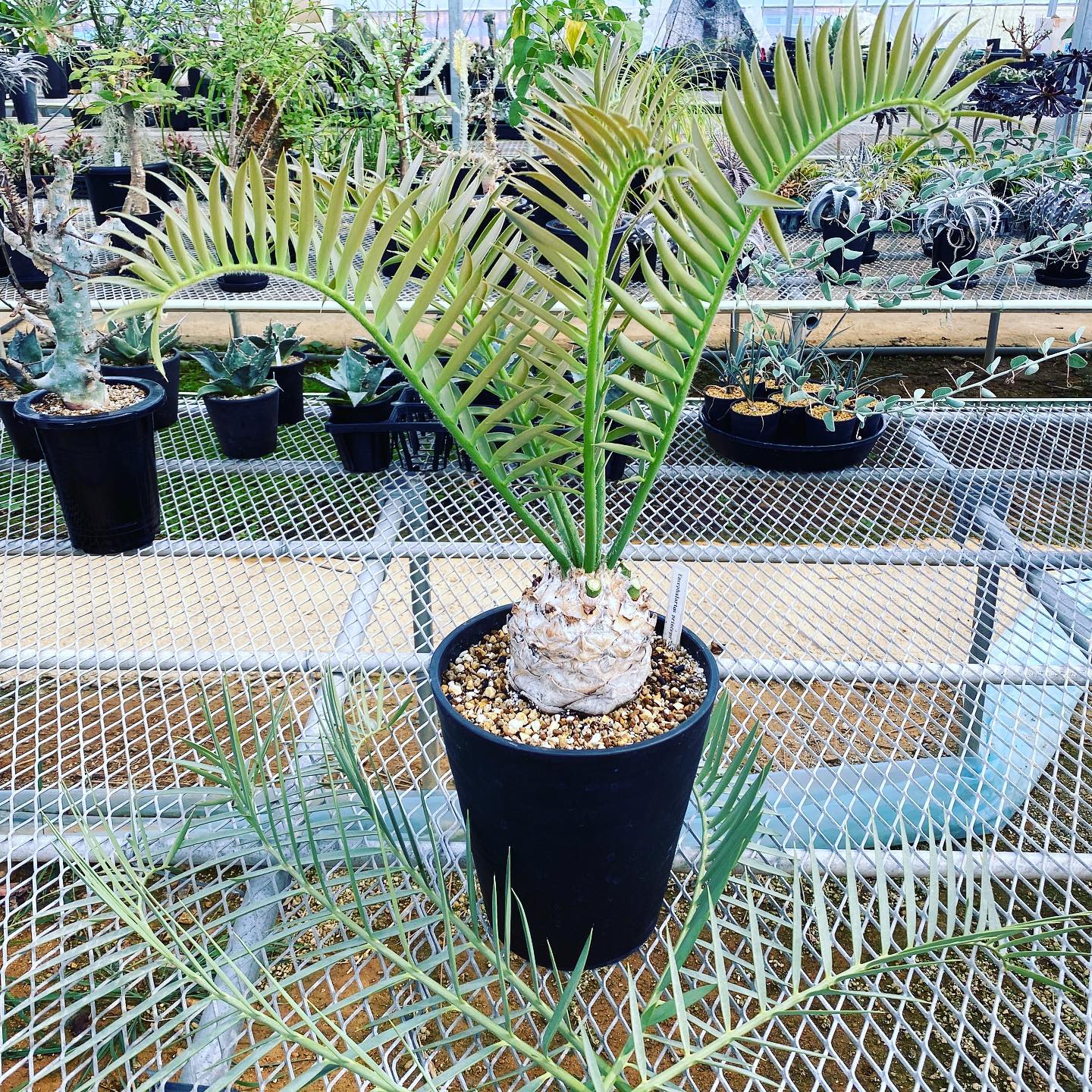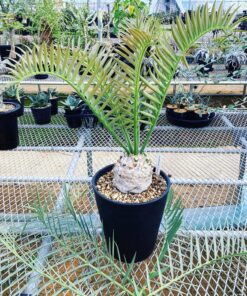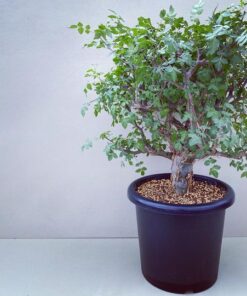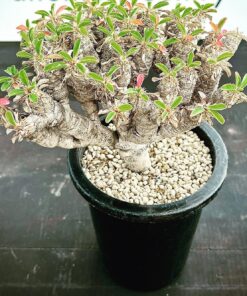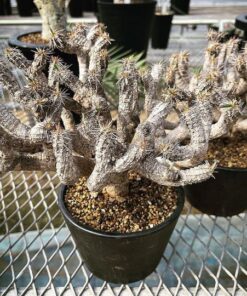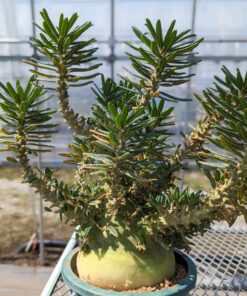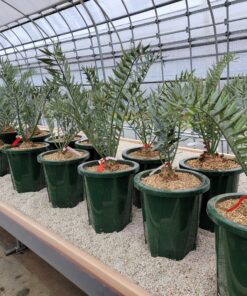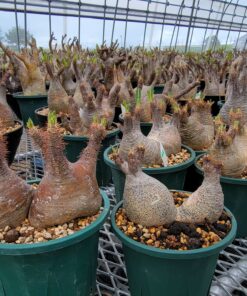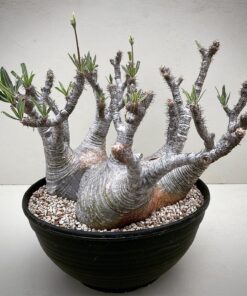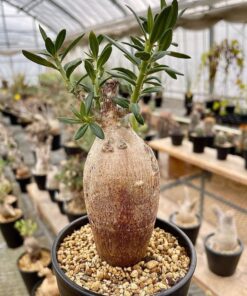Encephalartos Princeps
$180.00
Encephalartos princeps is a species of cycad that is native to Eastern Cape Province of South Africa.
Categories: All Plants, Medium Plants
Tags: Caudex Plants, encephalartos, Encephalartos princeps
Encephalartos princeps, also known as the Prince’s Cycad, is a fascinating species of cycad in the family Zamiaceae. This plant is native to South Africa, specifically the Eastern Cape Province.
Here are some key features and interesting facts about Encephalartos princeps:
Appearance and Structure
Encephalartos princeps is notable for its stout, upright trunk, which can grow up to 3-4 meters in height and occasionally even taller. The trunk is covered in a layer of old leaf bases, which give it a distinctive, rough texture.
The leaves of Encephalartos princeps are pinnate (feather-like), growing up to 1.5 meters long. They are a striking blue-green color and are arranged in a rosette at the top of the trunk. Each leaf is divided into many narrow, rigid leaflets, which have a sharp point at the tip.
Reproduction and Fruiting
Like other cycads, Encephalartos princeps is dioecious, meaning that individual plants are either male or female. Male plants produce large, cylindrical cones that release pollen, while female plants produce large, barrel-shaped cones that bear seeds.
The seeds of Encephalartos princeps are large and covered with a bright red, fleshy outer layer when mature. This is likely an adaptation to attract animals, which eat the seeds and disperse them in their droppings.
Cultivation and Care
Encephalartos princeps is a slow-growing plant that prefers a sunny location and well-draining soil. It is quite drought-tolerant once established, but appreciates regular watering during the growing season.
This cycad is a prized specimen plant for gardens due to its striking foliage color and unique form. It can also be grown in large pots and makes an excellent indoor plant if given enough light.
Conservation Status
Encephalartos princeps is currently listed as “Vulnerable” on the IUCN Red List of Threatened Species. The main threats to this species are habitat loss due to agricultural expansion and illegal collection for the horticultural trade.
In conclusion, Encephalartos princeps is a distinctive and beautiful plant that is highly valued for its unique appearance and resilience. However, it is also a species in need of conservation efforts to ensure its survival in the wild.
Related products
All Plants
$120.00
New
All Plants
$100.00
All Plants
$150.00
All Plants
$230.00
All Plants
$200.00
All Plants
$180.00
All Plants
$200.00
All Plants
$150.00

